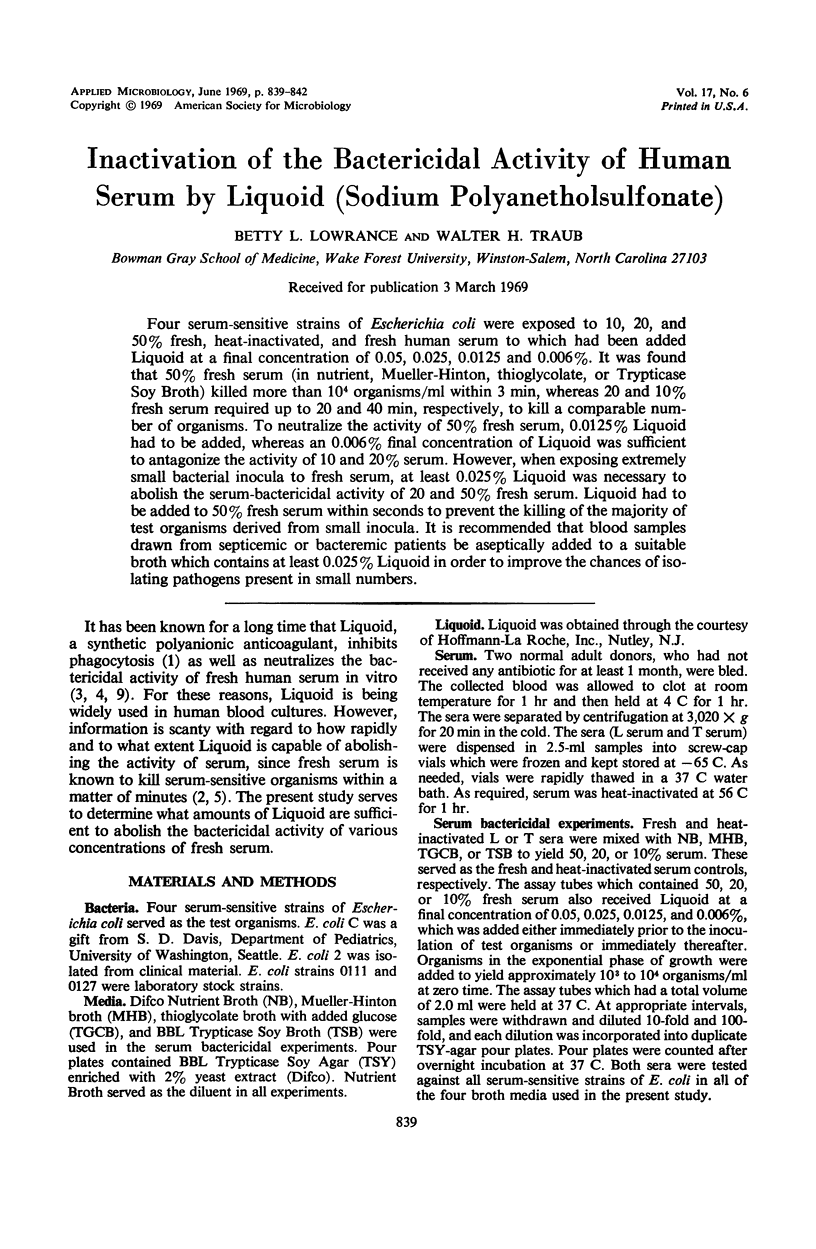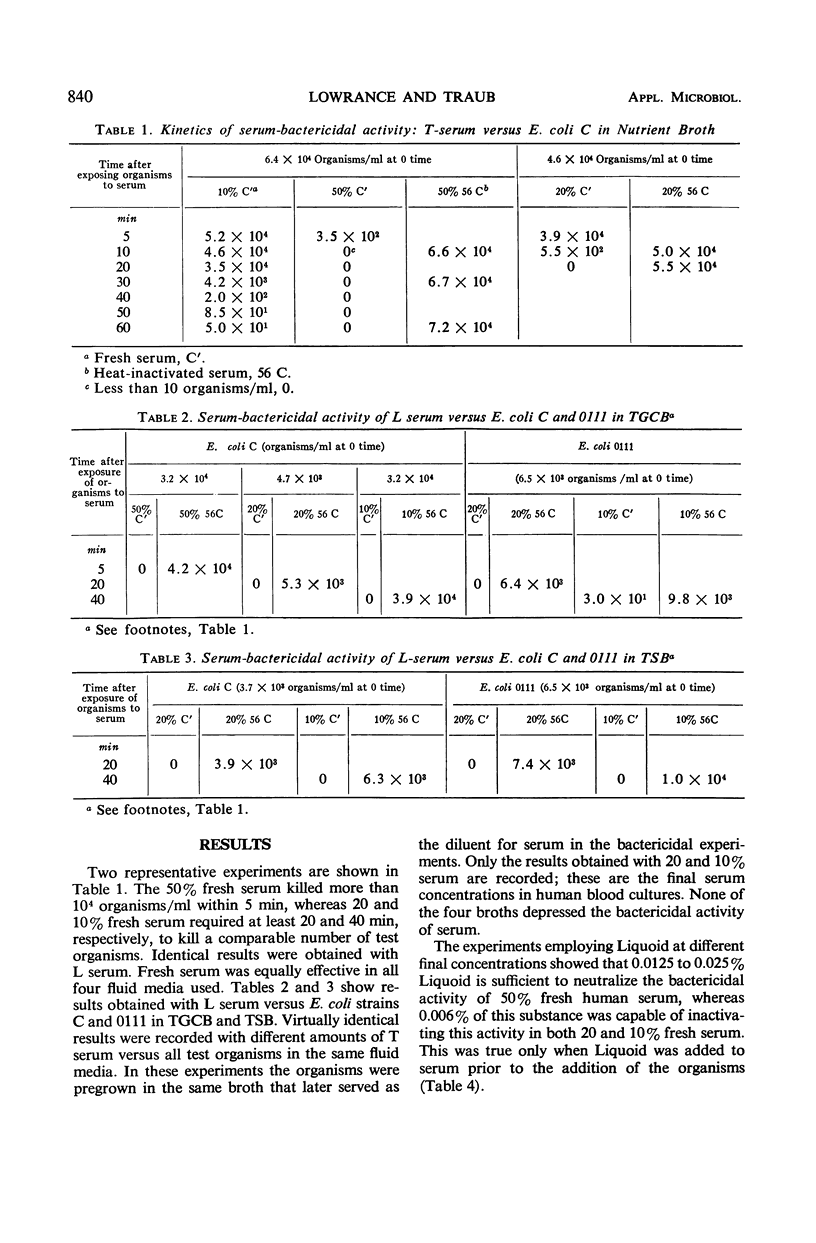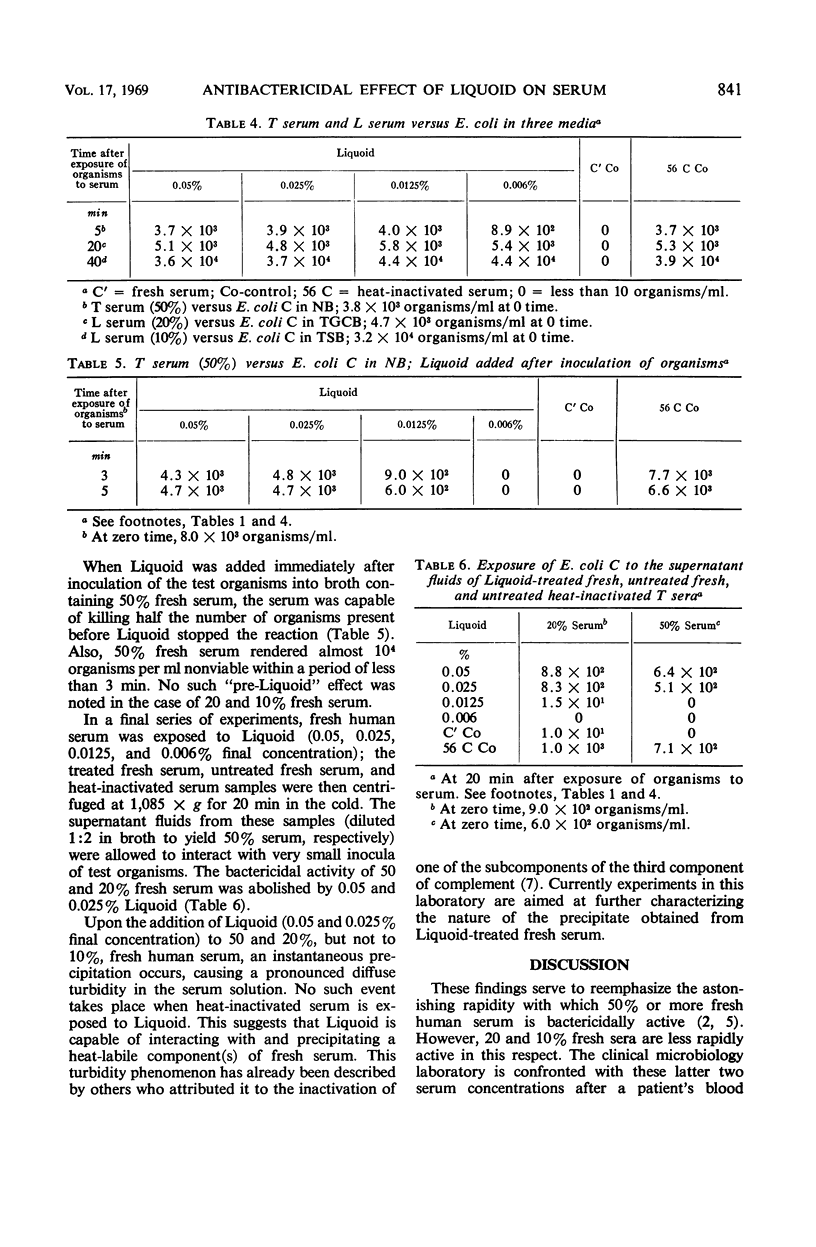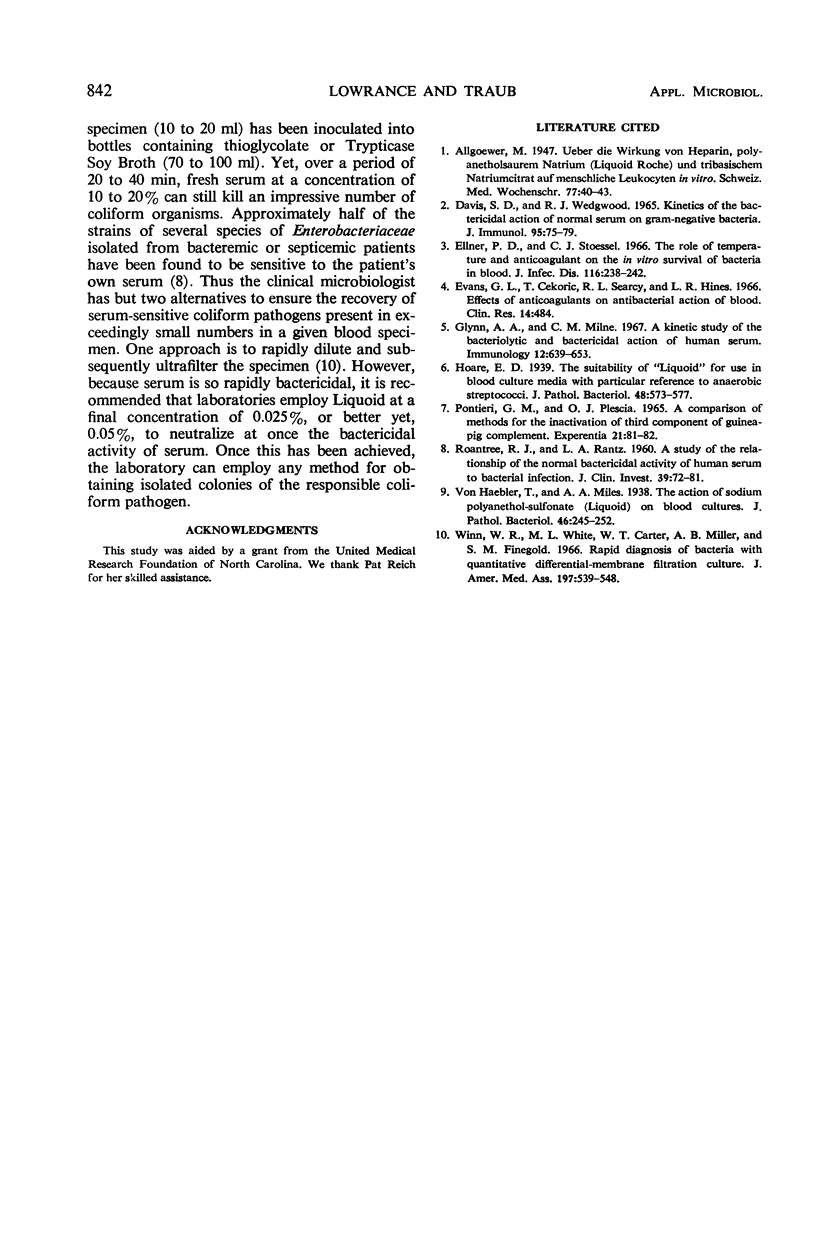Abstract
Four serum-sensitive strains of Escherichia coli were exposed to 10, 20, and 50% fresh, heat-inactivated, and fresh human serum to which had been added Liquoid at a final concentration of 0.05, 0.025, 0.0125 and 0.006%. It was found that 50% fresh serum (in nutrient, Mueller-Hinton, thioglycolate, or Trypticase Soy Broth) killed more than 104 organisms/ml within 3 min, whereas 20 and 10% fresh serum required up to 20 and 40 min, respectively, to kill a comparable number of organisms. To neutralize the activity of 50% fresh serum, 0.0125% Liquoid had to be added, whereas an 0.006% final concentration of Liquoid was sufficient to antagonize the activity of 10 and 20% serum. However, when exposing extremely small bacterial inocula to fresh serum, at least 0.025% Liquoid was necessary to abolish the serum-bactericidal activity of 20 and 50% fresh serum. Liquoid had to be added to 50% fresh serum within seconds to prevent the killing of the majority of test organisms derived from small inocula. It is recommended that blood samples drawn from septicemic or bacteremic patients be aseptically added to a suitable broth which contains at least 0.025% Liquoid in order to improve the chances of isolating pathogens present in small numbers.
Full text
PDF



Selected References
These references are in PubMed. This may not be the complete list of references from this article.
- DAVIS S. D., WEDGWOOD R. J. KINETICS OF THE BACTERICIDAL ACTION OF NORMAL SERUM ON GRAM-NEGATIVE BACTERIA. J Immunol. 1965 Jul;95:75–79. [PubMed] [Google Scholar]
- Ellner P. D., Stoessel C. J. The role of temperature and anticoagulant on the in vitro survival of bacterial in blood. J Infect Dis. 1966 Apr;116(2):238–242. doi: 10.1093/infdis/116.2.238. [DOI] [PubMed] [Google Scholar]
- Glynn A. A., Milne C. M. A kinetic study of the bacteriolytic and bactericidal action of human serum. Immunology. 1967 Jun;12(6):639–653. [PMC free article] [PubMed] [Google Scholar]
- PONTIERI G. M., PLESCIA O. J. A COMPARISON OF METHODS FOR THE INACTIVATION OF THIRD COMPONENT OF GUINEA-PIG COMPLEMENT. Experientia. 1965 Feb 15;21:81–82. doi: 10.1007/BF02144753. [DOI] [PubMed] [Google Scholar]
- Roantree R. J., Rantz L. A. A STUDY OF THE RELATIONSHIP OF THE NORMAL BACTERICIDAL ACTIVITY OF HUMAN SERUM TO BACTERIAL INFECTION. J Clin Invest. 1960 Jan;39(1):72–81. doi: 10.1172/JCI104029. [DOI] [PMC free article] [PubMed] [Google Scholar]
- Winn W. R., White M. L., Carter W. T., Miller A. B., Finegold S. M. Rapid diagnosis of bacteremia with quantitative differential-membrane filtration culture. JAMA. 1966 Aug 15;197(7):539–548. [PubMed] [Google Scholar]


